風中的葉鞘器物 | Sheath Windmill in the Ritual Wind
- Tawei Liu

- 7月22日
- 讀畢需時 6 分鐘
已更新:7月23日
2022 年 10 月,來到花蓮撒固兒部落,參與撒奇萊雅族的火神祭(Palamal a Lisin)。那是一個傍晚風起的場域,地面鋪著新割的草,空氣中瀰漫著木煙的味道。火還沒升起之前,整個空間的呼吸都緩了下來。所有人的等待,像是為了某個要被打開的時刻。
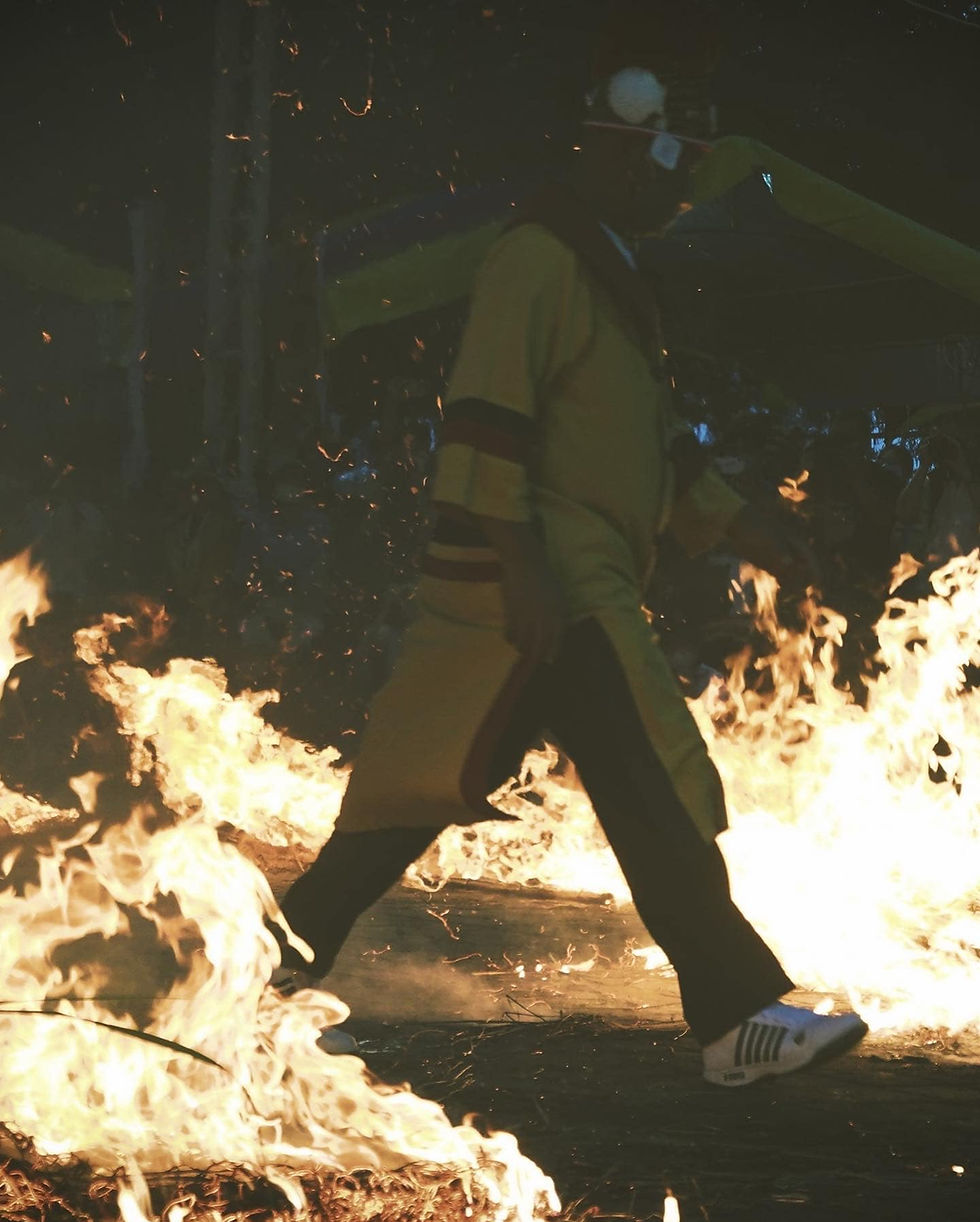
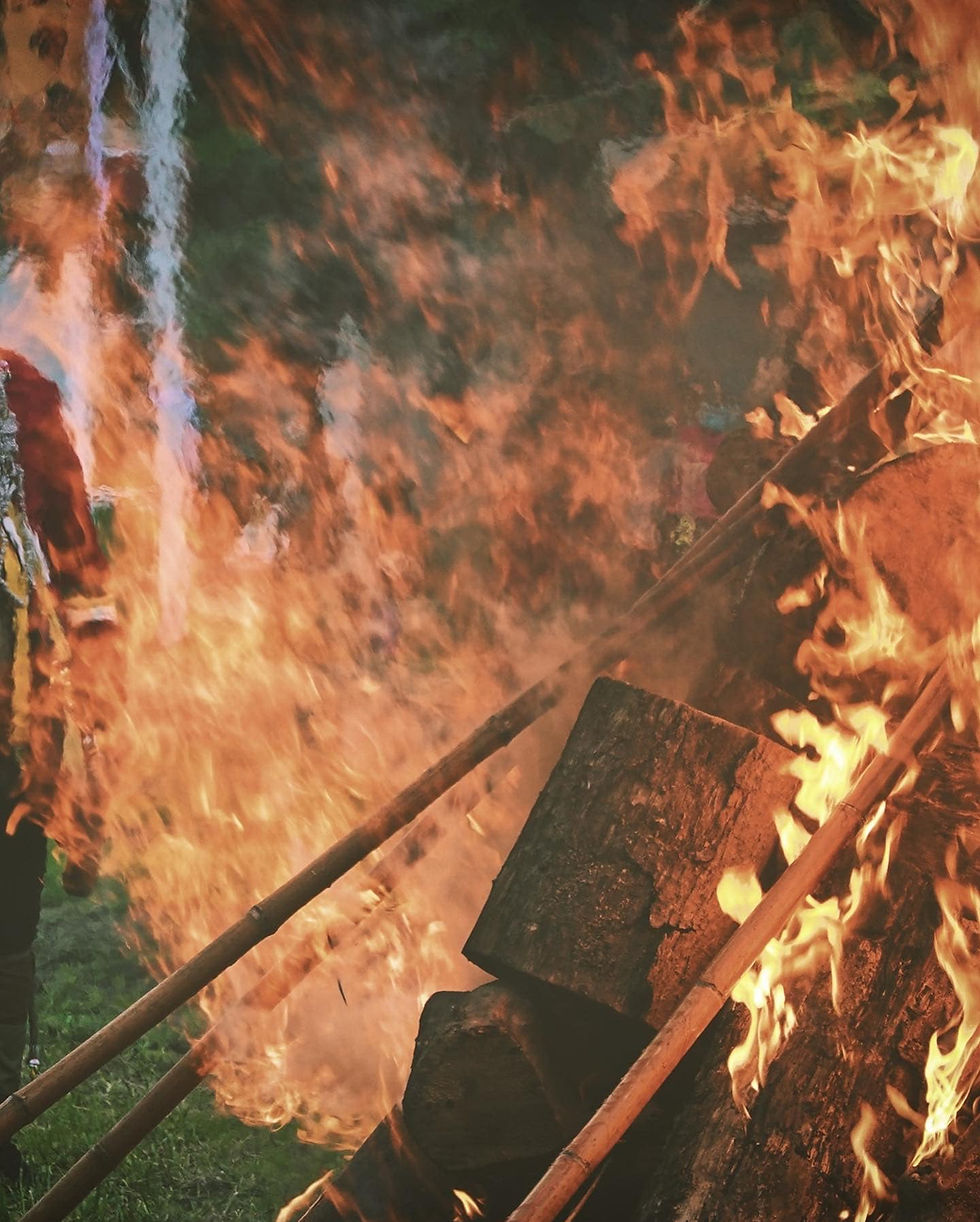
那天,第一次在儀式現場看見以檳榔葉鞘製成的風車。它們不是裝飾,也不是擺拍道具,而是實實在在地立在儀式的陣列中——和供物、薑株、酒、水、竹與芒草並列。族人說,它是用來「招風引靈」的器物。風車被固定在細長的竹竿上,四瓣葉片以竹釘與葉柄組合成形,安靜地立在儀式場中,像是正等待風、也等待靈的抵達。
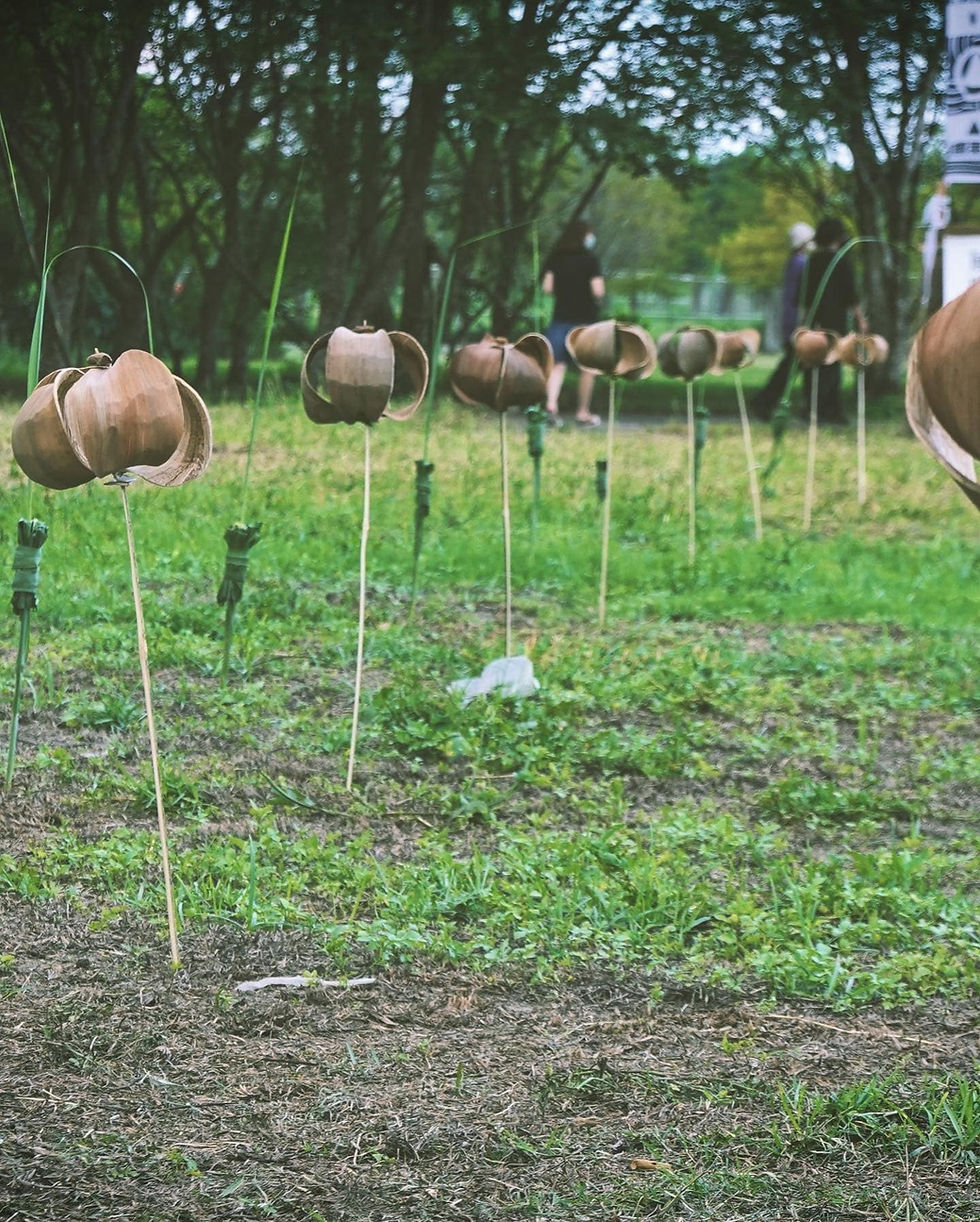
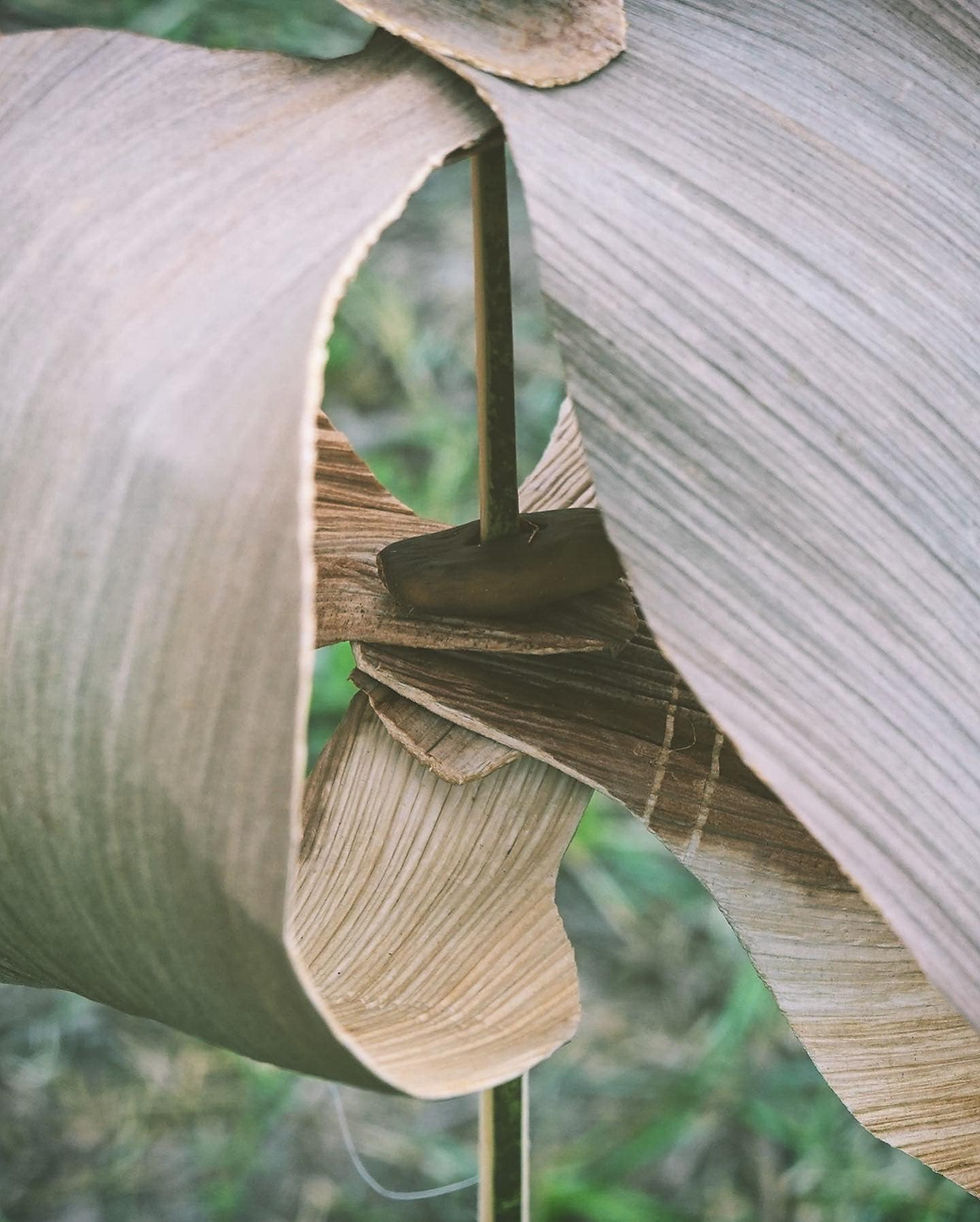
無法替這些器物說明意義,只能描述當下所見:葉鞘被事先裁切、彎折,用竹釘與葉柄固定成形,插於會場與五節芒之間。它們不動的樣子,反而更像是一種沉靜的預備,或者說,是一種「準備讓空氣流動起來」的姿態。
除了風車,我還看見了一整排芒草編織結界,被織成環狀,插在儀式場地的邊緣,像是畫出一圈無形的守護線。現場的祭司手持整株薑,口中含著酒,一邊繞場一邊將酒水噴灑在薑上。象徵著「酒是引路,薑是鑰匙。當薑與酒相遇的那一刻,就是開門之時。」那樣的動作節奏一致、表情專注,只知道那是一段不能被打斷的過程。
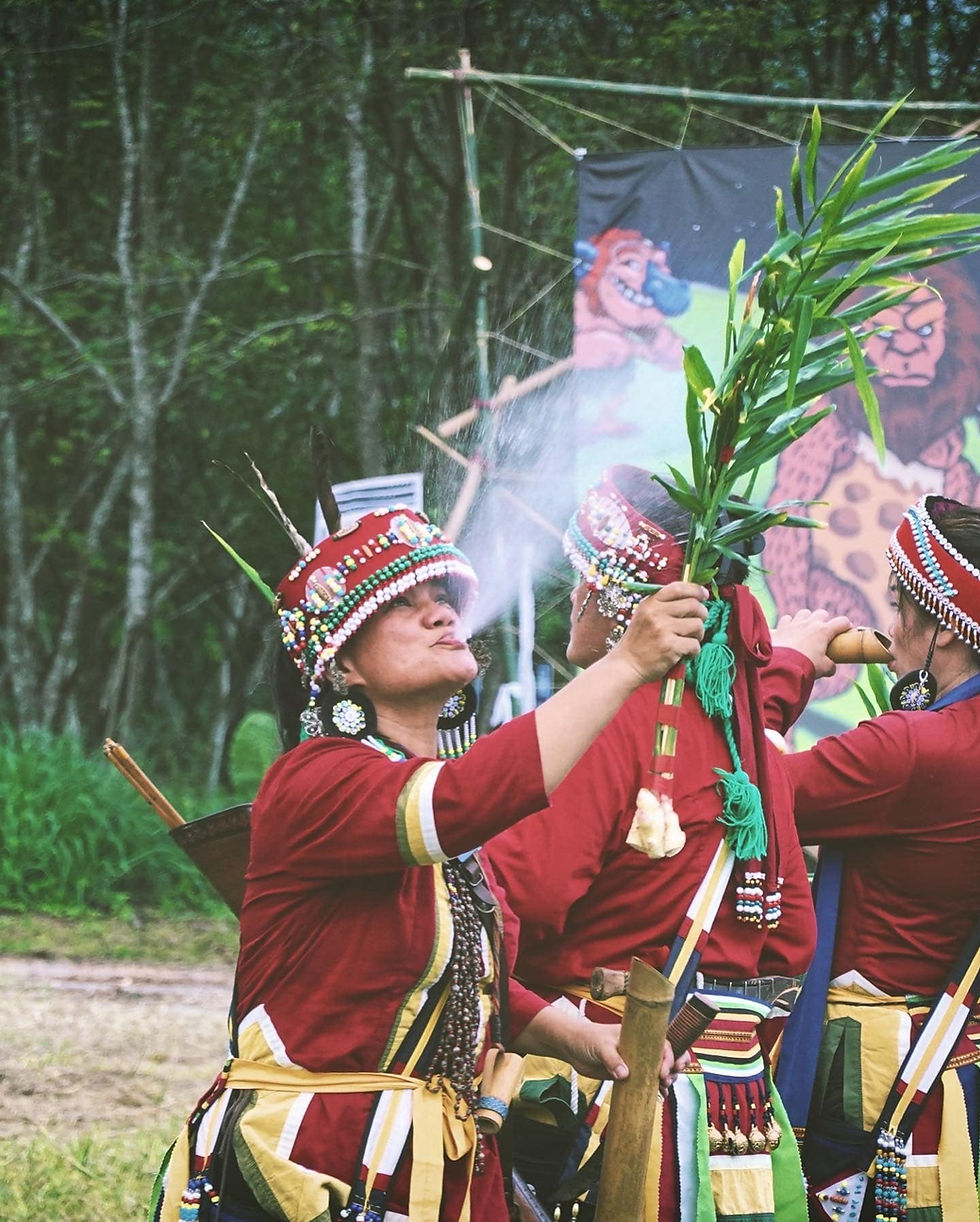

那天的場地上,還鋪著各式農作物與食物:玉米、芋頭、都倫、百香果⋯⋯擺在一張張葉子上,有的放在葉鞘摺成的盒裡,這些食物不只是供品,也是一種土地的紀錄。
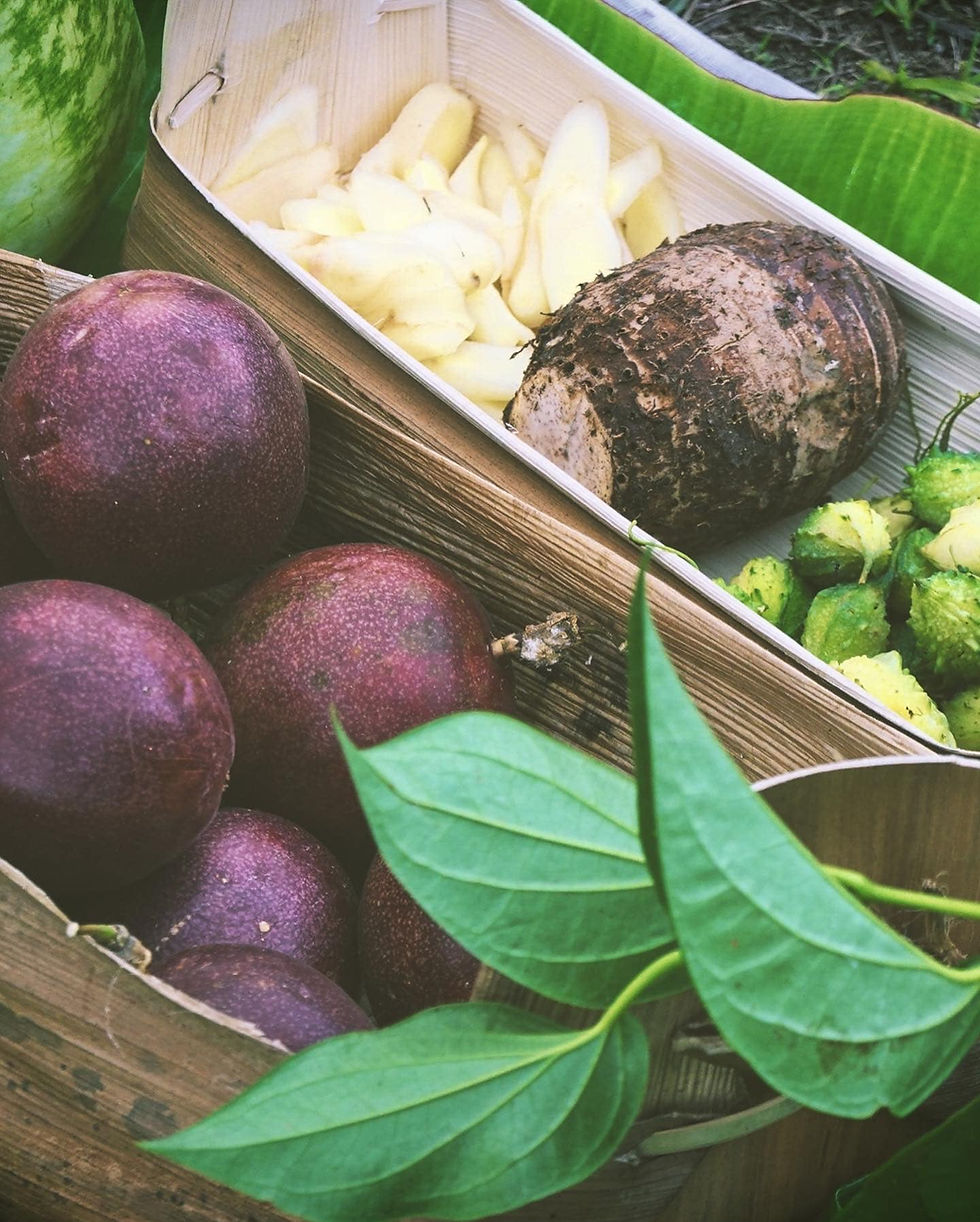
作為一個日常與材料工作的人,我們對這樣的觀看感到非常謙卑。那不再是我們熟悉的檳榔葉鞘,不再是設計或工藝的載體,而是重新回到一個被賦予信任的位置——它可以成為靈的器物,而不是人的工具。
火神祭是一場屬於撒奇萊雅族的儀式,但很慶幸,在那個夜晚能夠站在風的邊緣,靜靜看見這些葉子的樣子。它們不是被使用的材料,而是與神靈並列、參與其中的存在。
離開現場時,沒有拍太多照片,只記住那排葉鞘風車的靜默。那不是我們常說的「材料的生命力」,而是——有些材料,不是用來詮釋的,而是要被好好放回文化裡。
—
儀式の風の中に立つ、檳榔葉の風車
──サキザヤ族の火の祭り〈Palamal a Lisin〉で出会ったもの
2022年10月、花蓮にあるサクル(撒固兒)集落を訪れ、サキザヤ族の火の祭り「Palamal a Lisin」に参加した。
夕暮れ時、野原には刈りたての草が敷かれ、空気には米酒と薪の煙の匂いが漂っていた。火が灯る前、空間全体が静かに息をひそめていて、まるで何かが開かれるのを皆が待っているようだった。
その日、私は儀式の中央に立てられた檳榔(ビンロウ)の葉鞘で作られた風車を初めて目にした。それは装飾品でも演出用のオブジェでもなく、供え物やショウガ、酒、水、竹、編まれた草と並んで、確かに「そこにいる」存在だった。
風車は細長い竹の棒に取り付けられ、4枚の葉片が丁寧に折られて形作られていた。
風は吹いていたが、それは回るためにあるのではなく、ただ静かに、何かを待つように立っていた。
この風車がどんな意味を持つのか、私には説明することはできない。ただ、その時そこに見たままを記録することはできる。
葉鞘は事前に切り出され、竹串と葉の茎で固定されていた。五節の芒とともに、供物のそばに並んでいた。動かないその姿は、むしろ風を迎え入れる準備をしているように見えた。
儀式の周囲には、芒(すすき)で編まれた輪のような結界が地面に立てられ、目に見えない境界線のような役割を果たしていた。
儀式を導く人たちは、生姜を手に持ち、口に含んだ酒を静かにその根に吹きかけながら歩いていた。
誰かがこう説明してくれた──「酒は道を照らし、生姜は鍵。酒と生姜が出会う時、天の扉が開く。」
その所作には一切の無駄がなく、誰にも邪魔されてはならない静けさが宿っていた。
地面には、とうもろこし、タロイモ、グァバ、ドゥルン、パッションフルーツなど、土地の作物が大きな葉に載せられ並んでいた。中には葉鞘で折られた器に収められていたものもある。
それらの供物は単なる食べ物ではなく、「この土地が育んだものの記録」のように感じられた。
普段から素材として葉鞘を扱っている私にとって、その日の光景はとても謙虚な気持ちにさせられるものだった。
そこでは、葉鞘は誰かのために作られた製品でも、丁寧に整えられたデザインでもなかった。
それはただ「そこに」あり、信頼をもって儀式に参加していた。
火神祭は、サキザヤ族の人々にとって大切な祈りの儀式であり、その論理や言葉の順序は私のものではない。
けれどあの夜、私は風の端に立ち、静かに葉の姿を見つめることができた。それらは、使われる素材ではなく、火と共に並ぶ存在だった。
帰り道、私はあまり写真を撮らなかった。ただ、風車の静けさをよく覚えている。
それは、私たちがよく言う「素材の生命力」とは少し違っていた。
きっと、ある素材は解釈されるためにあるのではなく、そっとその文化の中へ戻されるべきなのだ。
—
In October 2022, I visited Sakur community in Hualien to attend the Sakizaya people’s fire ritual, known as Palamal a Lisin. It was early evening when the wind began to rise. Freshly cut grass covered the ground, and the air carried the scent of millet wine and wood smoke. Before the fire was lit, the whole space felt as if it were holding its breath, waiting for something to be opened.
That evening, I saw—perhaps for the first time—a windmill made from betel nut sheath placed at the heart of the ritual space. It wasn’t decoration, nor a staged object for photos. It stood quietly alongside offerings: ginger, millet wine, water, bamboo, and woven grass. I was told it served to “invite the wind, and with it, the spirits.” Fixed to a tall bamboo pole, its four folded leaves had been carefully cut and shaped in advance. They didn’t spin in the wind that day—but their stillness seemed intentional, as if they were waiting too.
I can’t explain what these objects mean in the Sakizaya belief system. I can only describe what I saw: the windmills arranged near the offering tables and woven grass barriers. Their presence felt like a silent preparation—almost a gesture of “readiness for the wind to come through.”
Along the outer edges of the ritual space, I saw grass woven into ring-shaped barriers, marking a boundary without walls. I also saw ritual leaders holding fresh ginger, their mouths filled with millet wine. As they walked, they sprayed the wine onto the ginger in a rhythmic, careful motion.
Someone explained to me, “The wine leads the way. Ginger is the key. When the wine meets the ginger, the gate opens.”
Even if I couldn’t understand everything, I could feel that this was not a moment to interrupt.
On the ground were a variety of crops and offerings: corn, taro, guava, betel nuts, passion fruit—arranged on leaves, or placed in folded sheath containers.
As someone who works with betel nut sheaths every day, I felt humbled. Here, the material was not crafted into a product or art piece. It wasn’t selected or polished—it simply stood there, holding its place within the ritual.
The fire ritual belongs to the Sakizaya people. Its rhythm, logic, and language are not mine. But I am grateful I was able to stand at the edge of the wind that night, and quietly observe these leaves—not as materials to be used, but as presences alongside the fire and the sacred.
When I left the site, I hadn’t taken many photos. But I remember the stillness of those windmills made from leaves. It wasn’t about “the life of the material” as I often say in the studio.
Some materials aren’t meant to be interpreted—they are meant to be returned, gently, to the culture they came from.















